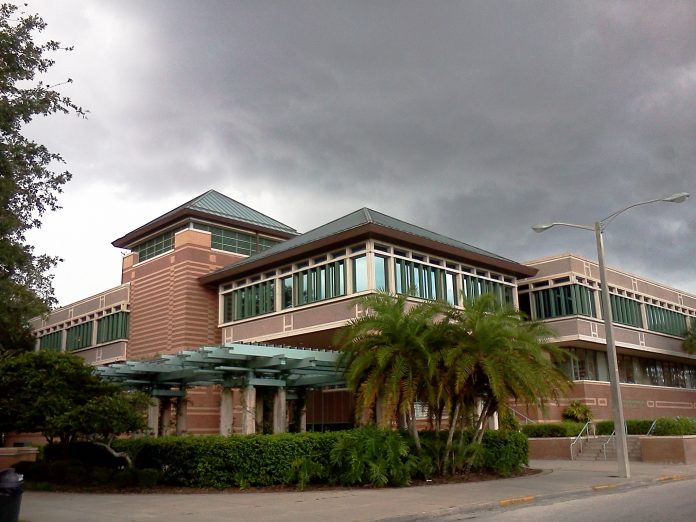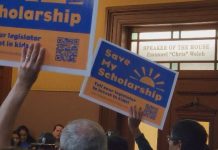
Florida long has been a pioneer in providing families with education freedom and choice. It was among the first states to enact both tax-credit scholarships and education savings accounts, and to expand those options to every K–12 student in the state.
With 350,000 students participating in the state’s K–12 scholarship policies, Florida has both the most total students and most students per capita in the nation benefiting from education choice. Accordingly, Florida deservedly ranked first in the nation on The Heritage Foundation’s Education Freedom Report Card for the past two years in a row.
That’s why it’s so disappointing to see the Sunshine State on the verge of taking a step backward.
The Florida Legislature is considering a bill, HB 1403/SB 7048, which attempts to fix some issues with the state’s education savings accounts, known locally as Family Empowerment Scholarships. Unfortunately, not only do the proposed changes not go far enough to address those issues, but the proposal also would add new regulations that make education savings accounts, or ESAs, less flexible for homeschoolers.
As I explained last year, there were drafting errors in the bill that expanded eligibility for the ESAs to all K-12 students. The flawed language prevented ESA students from being able to choose religiously affiliated providers of virtual learning. It also defined “eligible private school” in a way that limited the ability of parents to choose “blended learning” programs that combine or alternate between in-person and virtual instruction, as well as “hybrid homeschooling” that alternates between in-person instruction and home education.
Advocates of education freedom and choice were hopeful that the Florida Legislature would fix the issues, in keeping with its commitment to education freedom and choice. Regrettably, that hasn’t happened. As I observed recently:
A broad coalition of advocacy organizations, including Heritage Action for America, has asked the Legislature to address these issues. Although the amended version of HB 1403 attempts to address the first of these issues, it does not go far enough to alleviate the latter. (Heritage Action for America is the grassroots action arm of The Heritage Foundation, for which The Daily Signal is the news outlet.)
HB 1403 still requires that participating private schools “[m]aintain a physical location in the state at which each student has regular and direct contact with teachers.” The amended version clarifies that the “regular and direct contact with teachers” requirement is satisfied if ESA students physically attend a private school “at least two school days per week,” which would allow hybrid homeschooling.
However, the bill would still limit the ability of ESA families to choose full-time virtual instruction or blended learning offered by private schools that have brick-and-mortar locations.
Even worse, the proposal would curtail the freedom and flexibility that ESA families now enjoy to customize their children’s education.
In response to bad-faith arguments by school choice opponents who raised baseless concerns about how parents might spend their ESA funds, Florida policymakers now are considering unnecessary restrictions on the categories of eligible expenditures. The proposal would limit spending on “equipment used as instructional materials” only for “subjects in language arts and reading, mathematics, social studies, and science.”
As William Mattox, director of the J. Stanley Marshall Center for Educational Options at The James Madison Institute recently explained, that would prohibit “all equipment expenses for art, music, physical education, foreign languages and various elective courses.”
Mattox continues:
In other words, [ESA] families would no longer be able to use their scholarship money for easels, paints, modeling clay, musical instruments, kickballs, basketballs, and many other items commonly found in public schools. These new restrictions would come down even though [ESA] students cost the Florida taxpayer less than public school students. And even though home-school students typically receive their primary instruction from an ‘unpaid volunteer’ (Mom).
It’s understandable that policymakers want to avoid waste, fraud, and abuse, but ensuring appropriate accountability for taxpayer dollars need not come at the expense of flexibility for families.
Arizona has a similar ESA policy, and the state auditor general’s most recent report found an improper payment rate of less than 0.001%. That’s leaps and bounds better than other government programs.
Indeed, a 2019 report by the U.S. Government Accountability Office found that “the school meals programs have reported high improper payment error rates, as high as almost 16% for the National School Lunch Program and almost 23% for the School Breakfast Program over the past four years.”
But for opponents of school choice, the real scandal is what ESA families can buy. They’re afraid that if families have the freedom to customize their child’s education, they might just decide that they’d rather do that rather than enroll their child in the one-size-fits-some school to which they are assigned.
Since school choice opponents have failed to eliminate education savings accounts, now they’re trying to make the program less flexible and therefore less attractive for families. Policymakers who support education freedom shouldn’t go along with them.
Art, music, and physical education are important components of a holistic education. That’s why they’re a part of the curriculum in public schools. Public schools have a legitimate interest in purchasing art supplies, musical instruments, and sports equipment to facilitate their students’ art, music, and physical education. The same goes for ESA families.
If Florida wants to continue to be a leader in education freedom, it must reverse this folly. Instead, Florida policymakers should ensure that homeschooling families using education savings accounts continue to have freedom and flexibility to choose the learning options that work best for their children.
Originally published by The Daily Signal. Republished with permission.
For more great content from School Reform News.
For more from The Heartland Institute.









